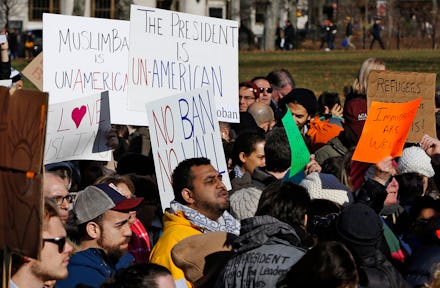What does vetting mean? Here's what the US process for screening immigrants and refugees looks like

President Donald Trump tweeted Sunday that his enormously controversial immigration ban signed Friday should include "extreme vetting."
While he didn't mention who would be subject to this "extreme vetting," it is presumed to apply to those affected by the executive order. This includes Syrian refugees and citizens of six other Muslim-majority countries: Iran, Iraq, Libya, Somalia, Sudan and Yemen.
The American Civil Liberties Union argued in a federal court in New York City that the executive order is unconstitutional, winning a temporary stay for parts of the order Saturday.
Even before Trump signed his executive order overhauling immigration law, refugees and migrants faced exhaustive, comprehensive and thorough screening processes — particularly for refugees.
An archived White House webpage under President Barack Obama's presidency provides an infographic of what the refugee screening process included. There are nine hoops to jump through, all of which include a number of steps before being eligible to continue with the process. In total, there's a minimum of around 40 steps.
These steps include collecting biometric data and screening by various agencies: the National Counterterrorism Center/intelligence community, FBI, Department of Homeland Security, State Department and, in some cases the Citizenship and Immigration Services' Fraud Detection and National Security Directorate.
This screening involves a series of interviews by different agencies. Any time new information is gathered — e.g. a different spelling of a name on an official document — the security check with these agencies resets and begins again.
There is also medical screening, to name just a few of the necessary steps in the refugee screening process.
As for migrants, they can legally reside in America for a number of reasons — from work visas to green cards.
There are different kinds of green cards available, but each involve exhaustive screening. These steps can range from finger printing to interviews with government officials to medical exams to being sponsored by an American citizen.
Subsequently, the chances of a terrorist or someone affiliated with a terrorist organization slipping through the screening process were already near-impossible — before Trump instituted his ban.